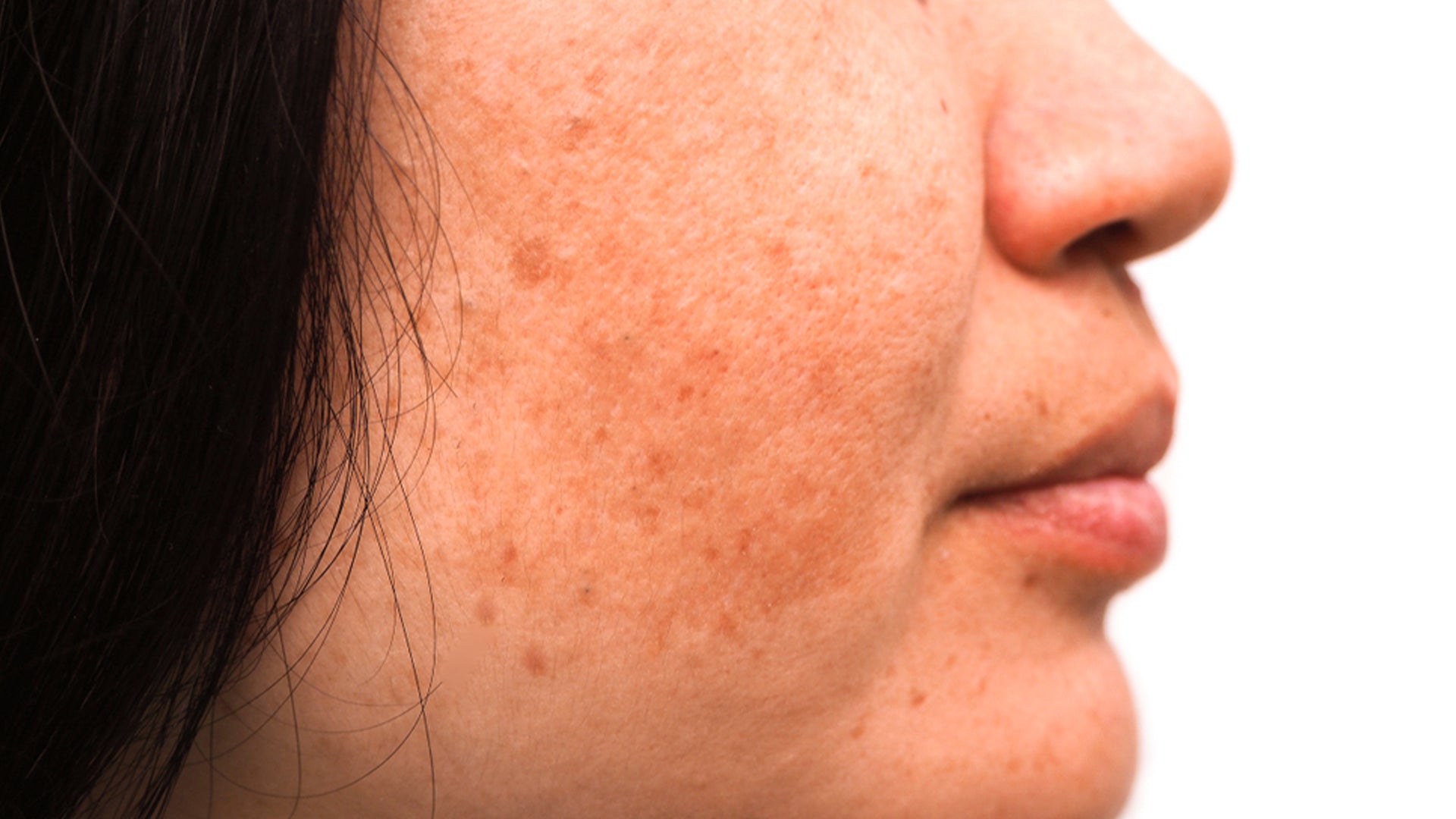Written by - Dhatri
What causes melasma and how can it be treated?
Are you suffering from dark black, brown, or greyish spots or patches on your face? Do they mostly appear on the upper lip, cheeks, or forehead?
Melasma is a common disease faced by most pregnant women, where dark blackish or brownish-greyish patches are formed on the face during pregnancy. These patches or spots commonly appear on the upper lips, cheeks, chin, nose, and forehead. It may also affect the arms, neck, and back, areas most exposedd to sunlight. Melasma is known as the "mask of pregnancy" because it occurs when oestrogen levels in pregnant women's bodies rise, causing melasma, a skin disorder.
Melasma is a harmless skin disease that happens due to the overproduction of cells that reflect your skin colour. These freckles fade away with time and are cured by several treatments.
Encountering melasma during pregnancy is quite natural for 50% of women (as of AAD). These dark spots get worse during the summer season as the skin is more likely to be exposed to sunlight. Melasma is caused by sun rays, UV rays, light, heat, radiation, and hormonal imbalances.
What causes Melasma?
Melasma is a general skin disease that might be encountered for any one of the following reasons:
- Change of hormones during pregnancy
- Recent hormone treatment
- Consumption of birth control pills
- Menopause in women
- Cosmetics that cause phototoxic reactions to skin
- Irritating skincare products and scented soaps
- Unbalanced levels of oestrogen and progesterone How to treat melasma?
You don't need to undergo any treatment for melasma if it occurs during pregnancy or consumption of birth control pills. This is because melasma will fade away after pregnancy and when you stop taking pills.
However, for those who suffer from melasma, they should be diagnosed if the freckles do not fade away with time and last for months.
The main objective in treating melasma is to halt skin pigmentation and to restore the natural colour of your skin. To achieve these goals, dermatologists preferred the following diagnostic techniques:
Treatment for Melasma:
- Melasma can be cured by applying hydroquinone cream directly to the freckles. This is the foremost suggestion by dermatologists for any person suffering from melasma.
- Melasma can be soothed with creams, gels, or lotions that contain corticosteroids and retinoids. By treating melasma patches with corticosteroids and tretinoin, you will notice a remarkably fast improvement.
- Sun protectants: UV rays, sunlight, heat, and light are the main causes of the occurrence of melasma. Sunlight will worsen the skin by increasing the skin pigmentation and melasma with new spots and dark patches. So a better sun protection cream, gel, or lotion can relieve melasma.
- Creams consist of azelaic acid, kojic acid, or vitamin C: Apart from hydroquinone, corticosteroids, retinoids, and creams comprising azelaic acid, kojic acid, or vitamin C help in comforting the skin and relieving melasma.
- Other remedies such as chemical peeling, micro-needling, laser treatments, platelet-rich plasma medications are recommended in addition to the above-described treatments for better results.
Advanced Pigmentation Serum
Advanced Pigmentation The Serum is a revolutionary product to cure melasma, hyperpigmentation, PIH, and PIE skin diseases.
This serum reduces the appearance of freckles on the skin with Alpha Arbutin, D Panthenol, Glycerin, Polyacrylate, Crosspolymer-6, Squalane, Phenoxyethanol, Xanthan Gum, and Ethylhexylglycerin, Sodium Hyaluronate, Sodium Hyaluronate Crosspolymer, Disodium EDTA, and Citric acid.
Key benefits of a serum:
- Hyperpigmentation is reduced.
- Helpful in removing dark spots.
- Brightens the overall complexion
- Skin Tone Has Been Evened Out
- The discolouration has faded and the tone has evened out.
Sources:
1.https://www.aad.org/public/diseases/color-problems/melasma#treatment
2.https://www.asds.net/Skin-Experts/Skin-Conditions/Melasma
3.https://www.aad.org/public/diseases/color-problems/melasma#symptoms
4.https://www.aad.org/public/diseases/color-problems/melasma#causes
5.http://skinofcolorsociety.org/dermatology-education/1406-2/
5.http://skinofcolorsociety.org/dermatology-education/1406-2/







 +91 9347578980
+91 9347578980